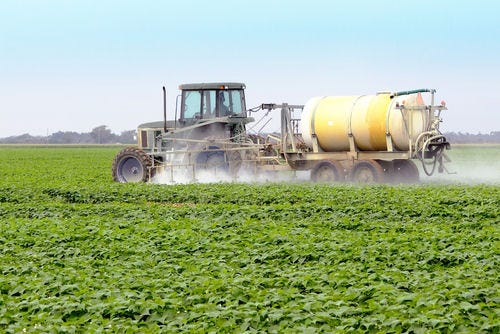
When you're measuring in ounces per acre, a 20% error is a big deal. Especially if you're already skimping on rates, if the error is in the direction of not applying enough product, you risk not getting the control of weeds you want. If it's in the direction of applying more herbicide than you should, then you're spending money you don't need to spend, and putting product into the environment that doesn't need to be there.

Should You Buy Small Scales to Measure Out Pesticides?
Fred Whitford, director of Purdue University Pesticide Programs, is taking a simple message to the countryside this winter. If you're measuring out herbicides that go on in ounces per acre, make sure the measuring cup or tube is calibrated for dry ounces per acre, if it's a dry product. And make sure it is the right tube for the right product.
According to Whitford, some manufacturers send tubes calibrated for measuring out their product with the herbicide. However, sometimes there aren't enough tubes shipped to match the number of containers reaching the dealer. He's heard of instances where the farmer took the product without getting or having the correct measuring tube for that product. He also knows of cases where dealers keep a collection of tubes. If a farmer needs a tube, they simply pull one out of the collection. It's likely not one calibrated for use with that product.
The result can be very inaccurate measuring. Coupled with problems with water hardness, a tendency to shave rights and possible application at the wrong time, when weeds aren't growing, you can have weed control issues. "If all the factors line up in one direction to give you under application of the product, what you're going to get is poor weed control," he says. "Your first instinct may be to blame it on resistant weeds, and maybe you have some, but you need to look closely to make sure it just isn't a case of poor herbicide application in the first place."
One simple solution is to invest in a small portable scale and measure out pesticides by weight instead of relying on calibrated tubes. Sometimes the tubes themselves aren't even calibrated correctly, he notes. "When you're dealing in ounces per acre, it's easy to be off by a bigger margin than you think," he says. "AS scales to weight out products could be a good investment."
About the Author(s)
You May Also Like




